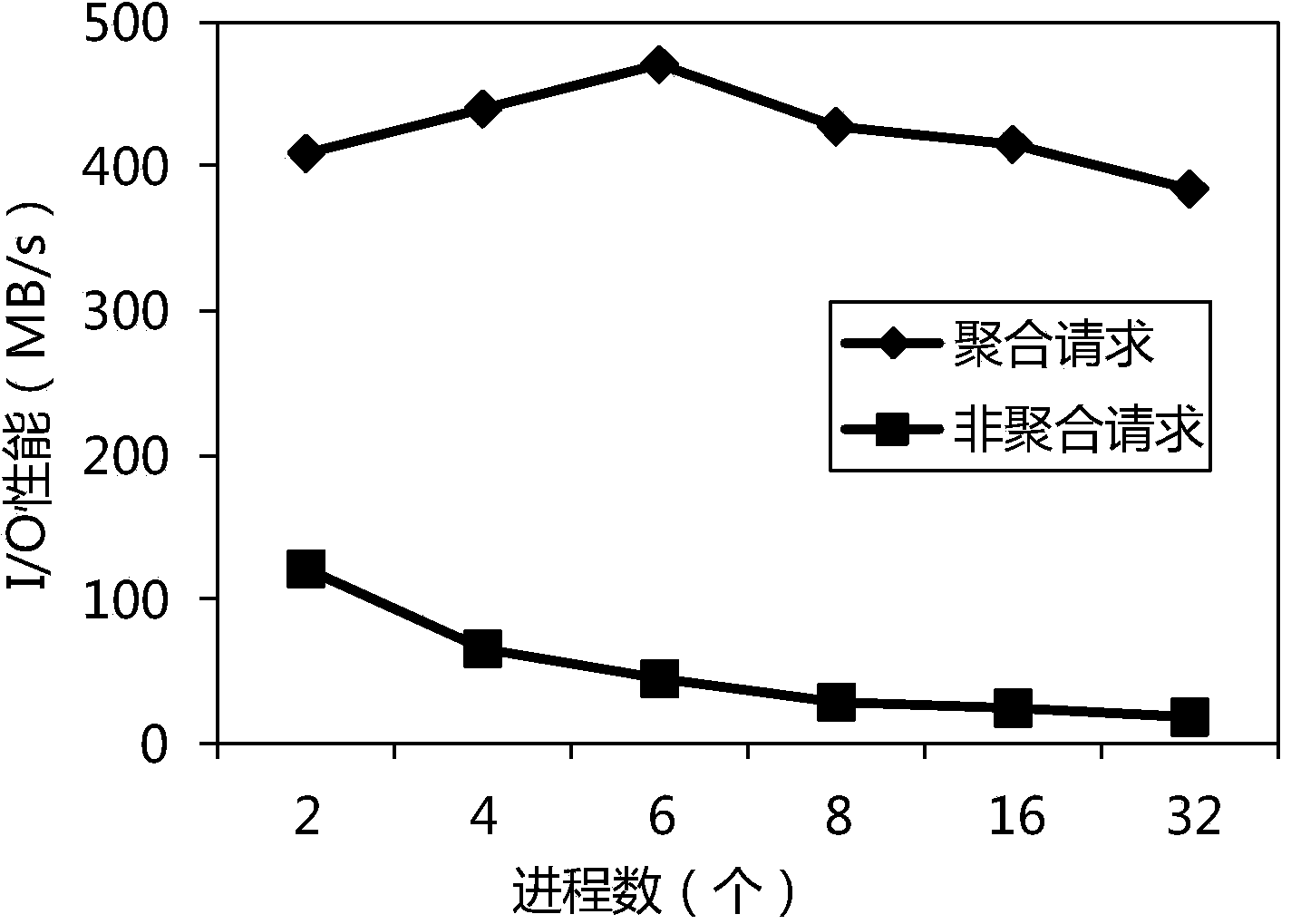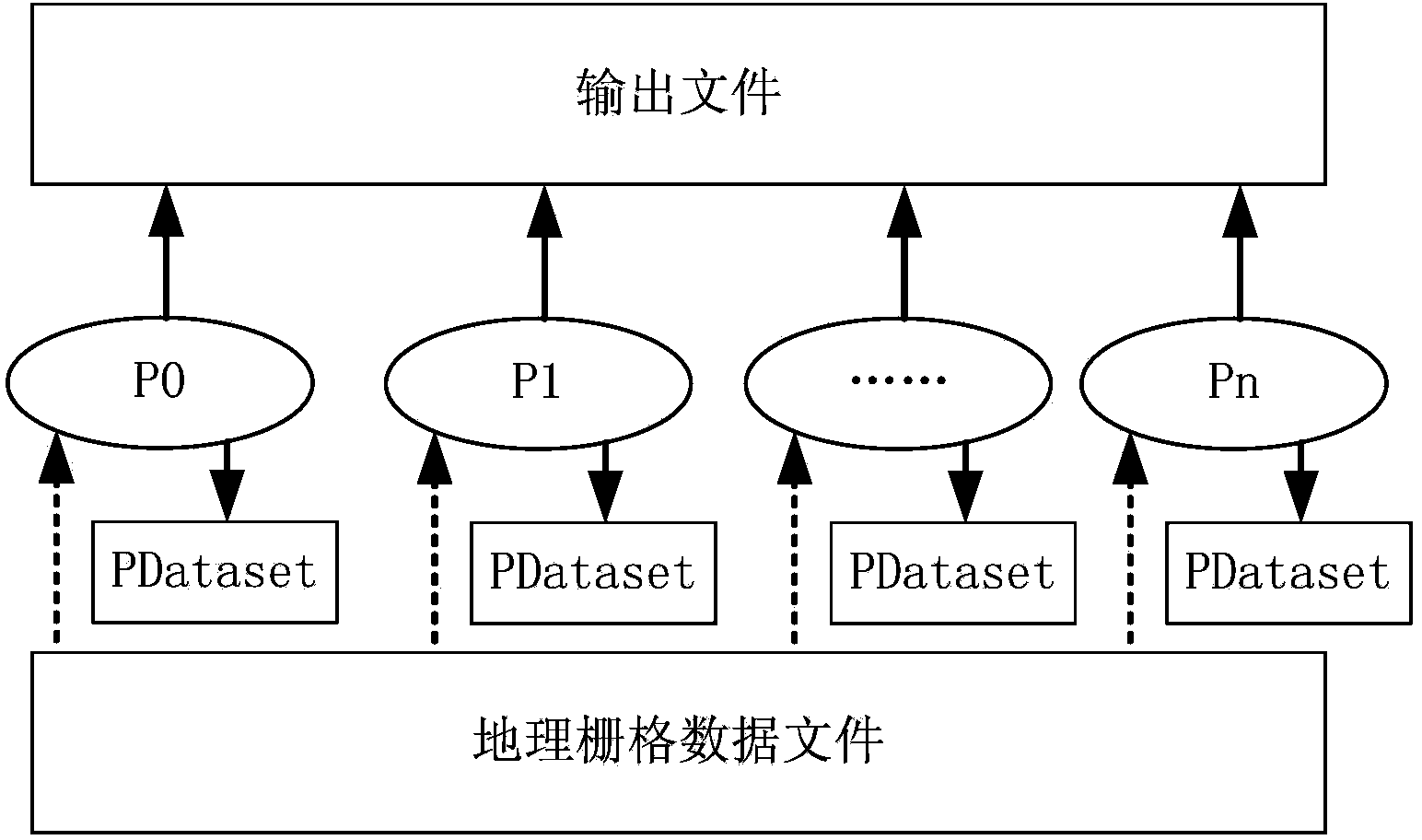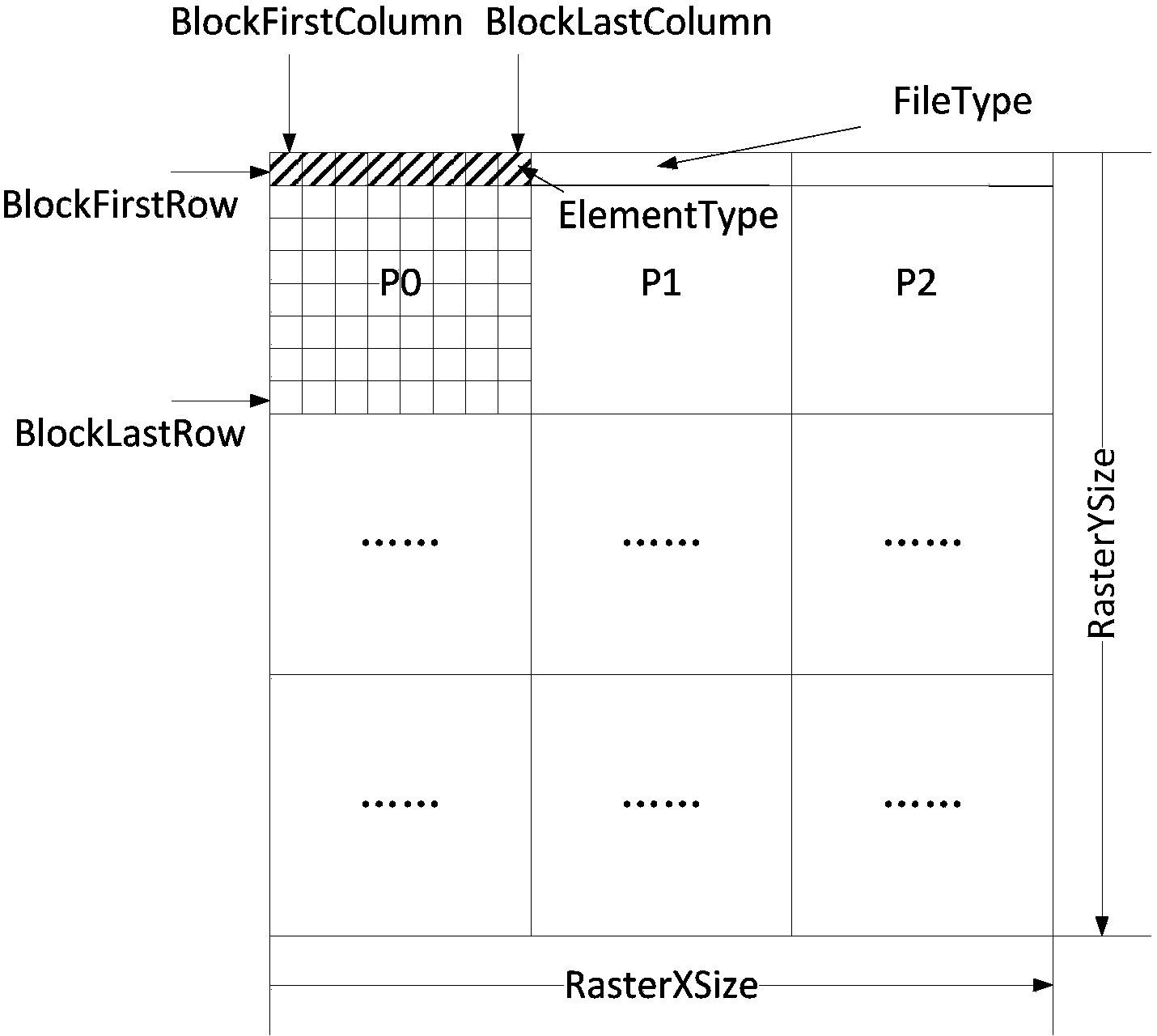Geographical raster data parallel reading-writing method based on request aggregation
A technology of raster data and reading and writing methods, applied in geographic information databases, concurrent instruction execution, structured data retrieval, etc., can solve the problems of unguaranteed data accuracy, strong random distribution of read and write requests, and few applications , to achieve the effect of improving the overall I/O efficiency
- Summary
- Abstract
- Description
- Claims
- Application Information
AI Technical Summary
Problems solved by technology
Method used
Image
Examples
Embodiment Construction
[0020] The present invention will be further described in conjunction with the accompanying drawings.
[0021] figure 1 It is a schematic flow chart of the present invention. As shown in the figure, assuming that there are n processes (P0, P1, P2, ... Pn) processing the same geographic raster data file to be processed at the same time, all processes call the GDAL library to read the pending geographic raster data file, from which Obtain the information of the geographic raster metadata and record it in the memory data structure PDataset; each processing process calculates the geographic raster that needs to be read in the geographic raster data file according to the unified data division method according to the geographic raster metadata information Grid data division size and offset; any process is responsible for reading the geographic reference information in the geographic raster metadata to be processed, creating a GTIFF output file, and writing the geographic reference ...
PUM
 Login to View More
Login to View More Abstract
Description
Claims
Application Information
 Login to View More
Login to View More - R&D
- Intellectual Property
- Life Sciences
- Materials
- Tech Scout
- Unparalleled Data Quality
- Higher Quality Content
- 60% Fewer Hallucinations
Browse by: Latest US Patents, China's latest patents, Technical Efficacy Thesaurus, Application Domain, Technology Topic, Popular Technical Reports.
© 2025 PatSnap. All rights reserved.Legal|Privacy policy|Modern Slavery Act Transparency Statement|Sitemap|About US| Contact US: help@patsnap.com



